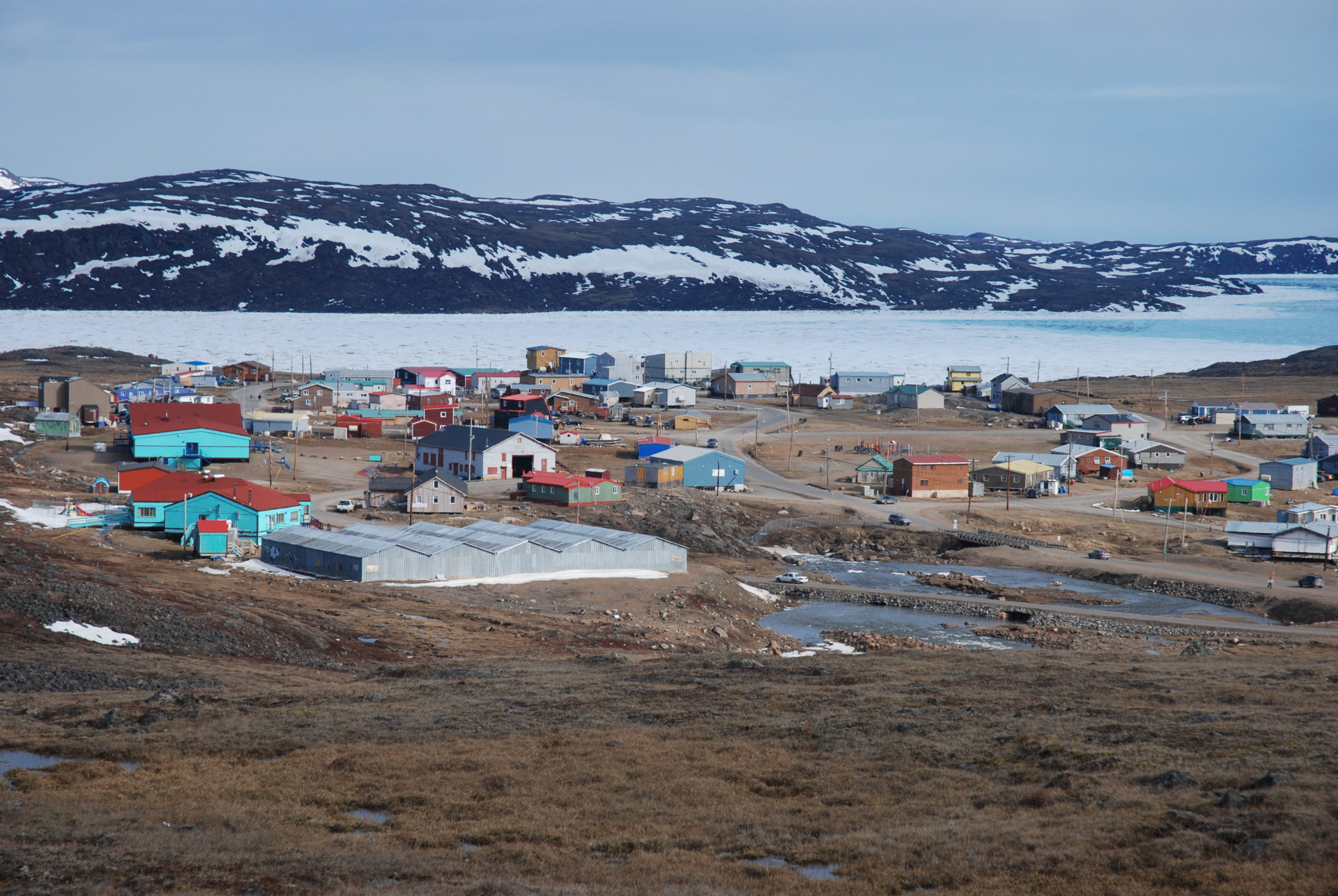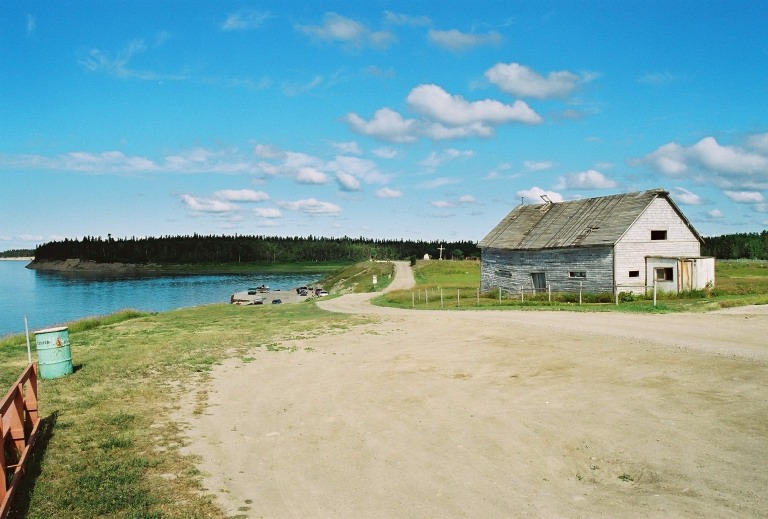Housing is health: Coronavirus highlights the dangers of the housing crisis in Canada’s North
The Canadian Arctic has suffered a housing crisis for decades.

What do you do when the government’s No. 1 strategy for slowing the spread of a global pandemic is virtually impossible to implement where you live? What do you do when you have already been living in a crisis for decades without anywhere near the same level of urgency or priority?
These are the questions currently facing communities across the Canadian North. A persistent housing crisis has led to a high prevalence of respiratory disease among northerners, and compounds additional social determinants of health.
[Coronavirus isn’t the only serious respiratory illness threatening Arctic residents]
Combined with a threadbare health-care system that leaves many communities without even a resident nurse, the northern housing crisis significantly underscores the vulnerability of northern residents in the face of a global pandemic.
I was born and raised in Yellowknife, N.W.T., and have spent the past 14 years engaged in academic research related to housing insecurity, health and home in collaboration and partnership with communities across the Canadian North. As Canada Research Chair in Northern Governance and Public Policy, I lead the At Home in the North partnership: a network of northern and Indigenous communities, governments, NGOs and researchers working in Northern Canada to share community-led strategies to address chronic housing need.
Northern housing crisis
A housing crisis has arguably been underway in the Canadian North since state-sanctioned housing programs were first unrolled in the Arctic in the mid-20th century. Since 2004, the crisis has only deepened as the annual federal support for social housing has been gradually phased out. That support has been replaced by sporadic housing funding packages that leave northern communities and governments grappling to take advantage of funding opportunities on a piecemeal basis.
Moreover, the bulk of current funding goes toward maintenance and retrofitting of existing units, and not to the addition of the new housing units so badly needed across the Canadian North. In fact, in 2018, Terry Audla, CEO of the Nunavut Housing Corporation, stated that over 10,000 Nunavut residents were without housing of their own, translating to a deficit of 3,500 housing units.
Meanwhile, the $240 million earmarked by the federal government as part of its National Housing Strategy, intended to support housing in Nunavut over 10 years, would translate into a mere 48 new housing units each year.

In 2019, the Inuit National Housing Strategy underlined that “over half (51.7 percent) of Inuit in Inuit Nunangat live in crowded housing compared to 8.5 percent of non-Indigenous Canadians.”
That same year, the N.W.T. Community Survey revealed that 42.7 percent of households across the territory were in core housing need — a national measure of housing affordability, suitability and adequacy — up from 15.5 percent in the 2016 federal census.
In addition to the housing crisis, health inequities place northern communities at increased risk in the face of COVID-19. A survey completed by the Dene Nation found that one-fifth of its membership were at risk of severe complications if infected with COVID-19 as a result of compounding factors including chronic housing need and high rates of asthma, diabetes and other health conditions.
[How the Arctic’s limited infrastructure could make coronavirus deadlier in the region]
Nunavut’s chief medical officer of health warned the impact of the virus on the territory could be especially harsh due to a landscape of housing need and the prevalence of respiratory illness, with Inuit children experiencing the highest rates of chronic respiratory disease in the world and a tuberculosis rate that is 300 times that of non-Indigenous Canadians.
The strategies employed to slow the spread of the virus in much of southern Canada are privileges not enjoyed by many northern communities. Overcrowded and inadequate housing makes physical distancing or self-isolation virtually impossible. Water insecurity poses a challenge for frequent hand washing or cleaning hard surfaces, and a lack of access to soap, hand sanitizer and disinfectant cleaner due to transportation challenges and high cost of living mean these essential products may be out of reach.
Northern response
In response to the pandemic, the leadership displayed across the Canadian North has been swift and remarkable at both the community and regional levels, with a series of containment strategies implemented at various scales.
On March 20, the N.W.T. shut its borders to non-essential travel to control spread of the virus, and implemented a mandatory 14-day self-isolation for all travellers to be completed in one of the four largest communities before onward travel to smaller settlements would be permitted. A few days later, the Nunavut government released the tightest travel restrictions in Canada with a ban on travel for everyone except residents and critical workers, and mandatory 14-day pre-boarding self-isolation.
Indigenous governments like the Dene Nation have also responded by encouraging members to head out on the land to distance themselves from COVID-19.
“Elders and knowledge keepers have always told us ‘a day will come, when we will need to go to the land’ and now is that time,” wrote Dene Nation Chief Norman Yakeleya in a news release. “With the closing of the schools, this is also an opportunity for families and their children to learn more about our culture and traditions and what has sustained us as Dene people for thousands of years.”
Community-based organizations like Hotıì ts’eeda and FOXY (Fostering Open Expression among Youth) also launched the “Our Home Is Our Camp” social media campaign to promote social distancing in a culturally safe and contextually relevant way.
Federal government response
Federal responses to the pandemic in Northern Canada have come through a $305-million National Indigenous Community Support Fund, part of a broader $82 billion aid package to help Canadians and businesses deal with the fallout from COVID-19. A further $129.9 million specifically for Yukon, Nunavut and the Northwest Territories is allocated to help bolster their health-care systems’ responses to COVID-19 and provide financial support for northern airlines and other businesses.
How communities and governments are using those funds differs. Following direction from Indigenous leadership, the N.W.T. government implemented the “At Home on the Land” program to support northerners to wait out the lockdown on the land.
Nunavut Tunngavik Inc. (NTI), the Inuit land claims organization, is channelling some of these funds towards promoting water and food security. NTI president Aluki Kotierk said, “We know that many Inuit live in overcrowded housing units and that conservation of water is something that is a daily mentality. But this is a time we need to be liberal with our water use.”
Yet while the funding announcements have been positively received by northern and Indigenous leadership, they are nevertheless emergency measures intended to help communities weather this storm. They do very little to sustainably and effectively address the underlying disparities and social determinants that have led to such health and infrastructural inequities in the first place. As NDP MP Mumilaaq Qaqqaq recently wrote to Prime Minister Justin Trudeau, it is time to close the health infrastructure gap in the Canadian North.
Meanwhile, if containment policies and land-based programs are not successful, COVID-19 will surely cast an unforgiving light on the persistent infrastructural disparities experienced across the North, and namely the housing crisis. This also begs the question: can we continue to call the northern housing crisis a crisis if it has become the status quo?
The global pandemic we currently face brings the ongoing neglect of northern housing and health infrastructure into sharp focus. There is no time greater than the present to acknowledge that housing is health care.
Julia Christensen is Canada Research Chair in Northern Governance and Public Policy at Memorial University of Newfoundland.
This article is republished from The Conversation under a Creative Commons license. Read the original article.